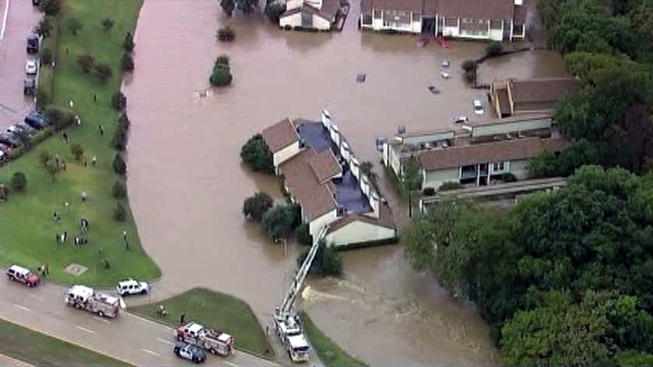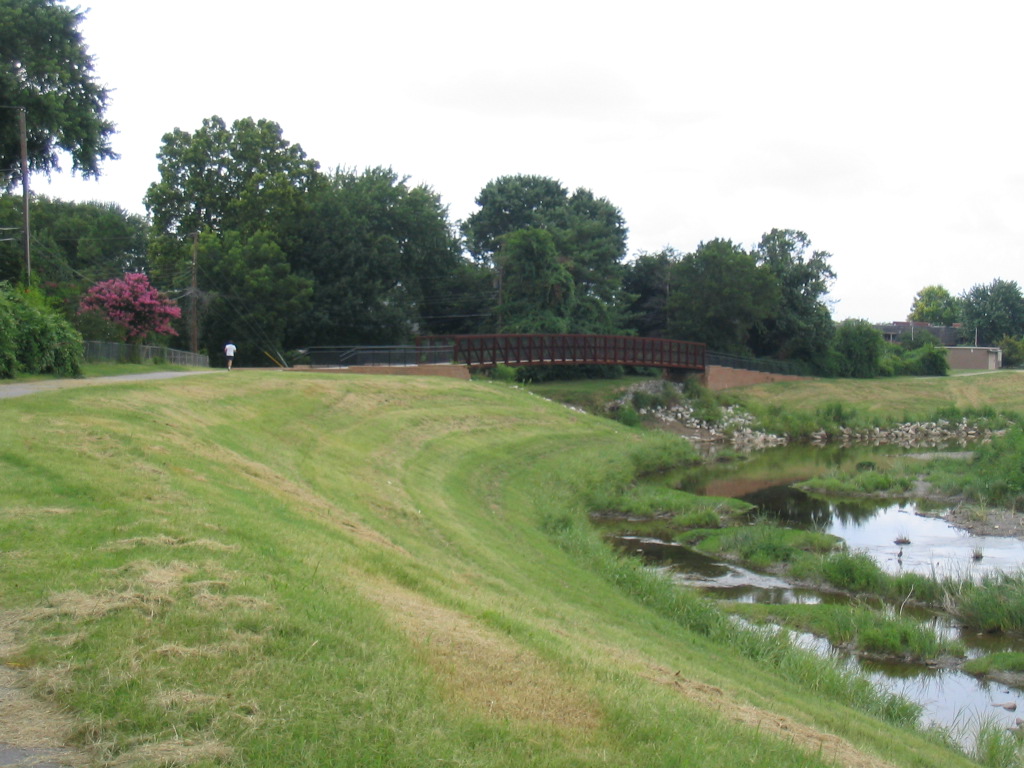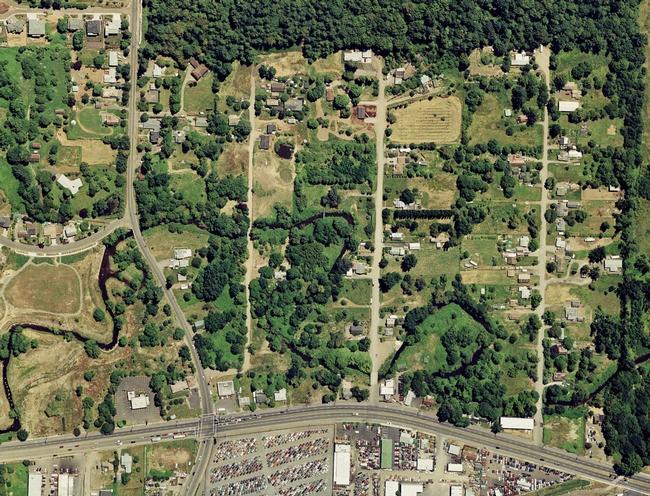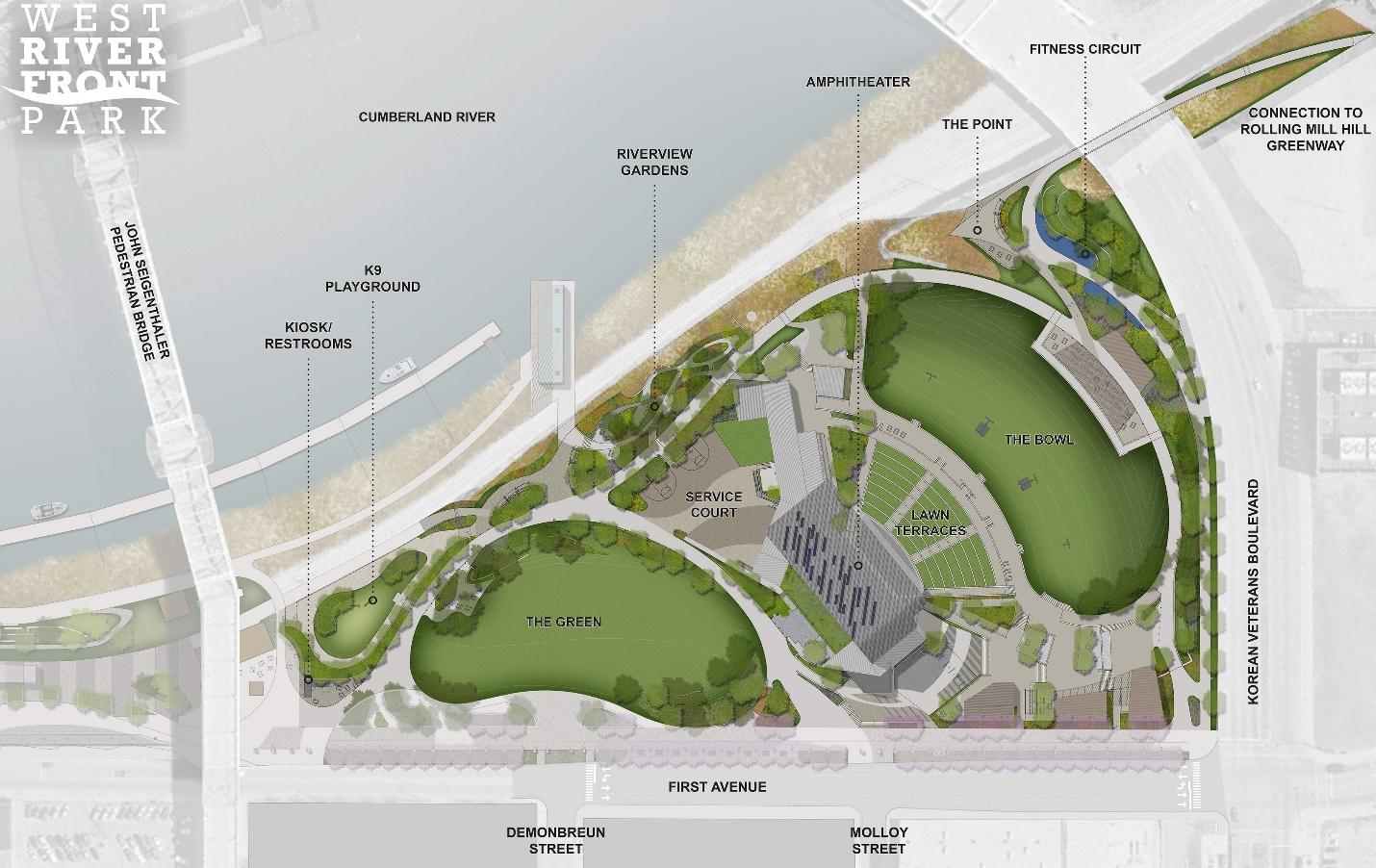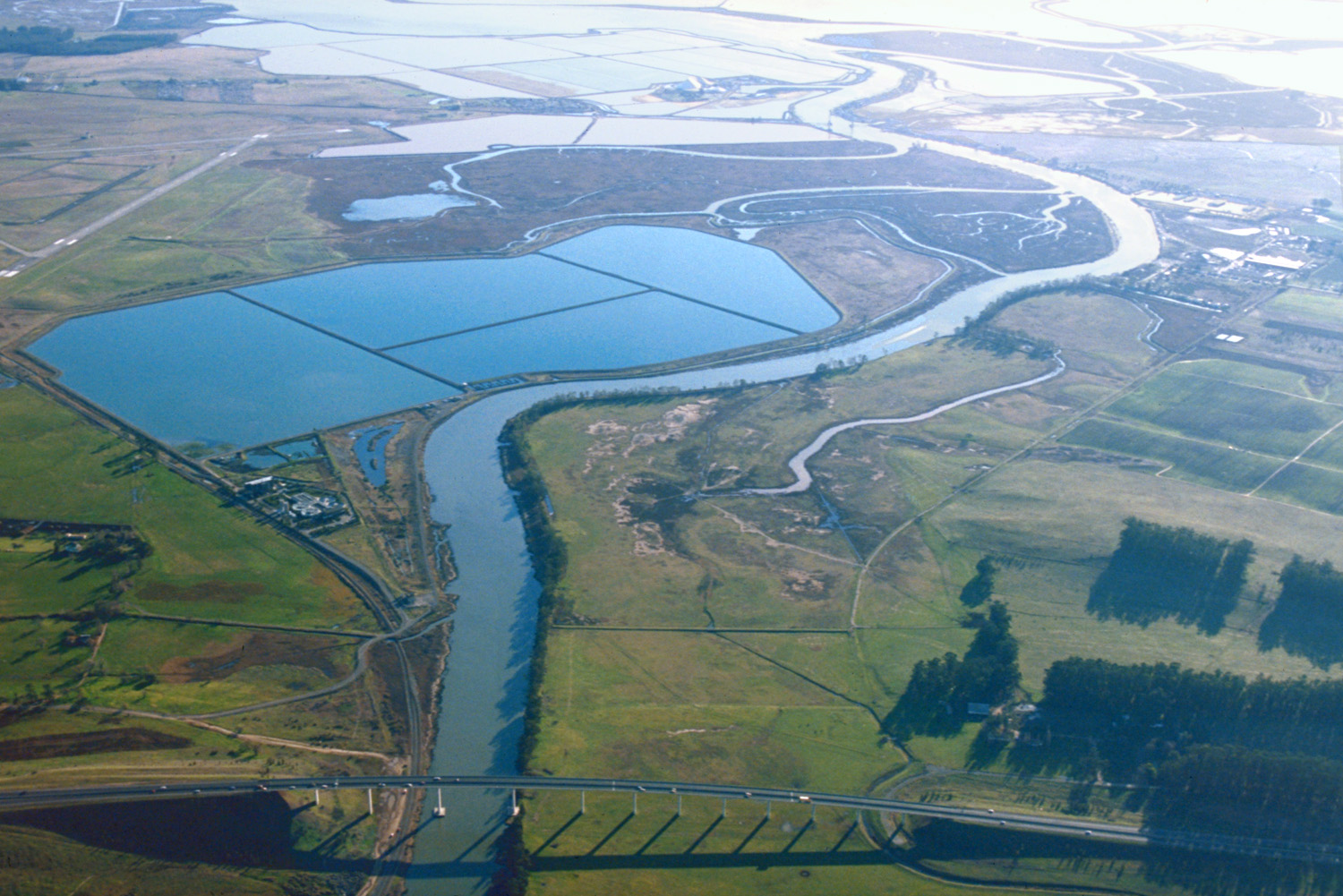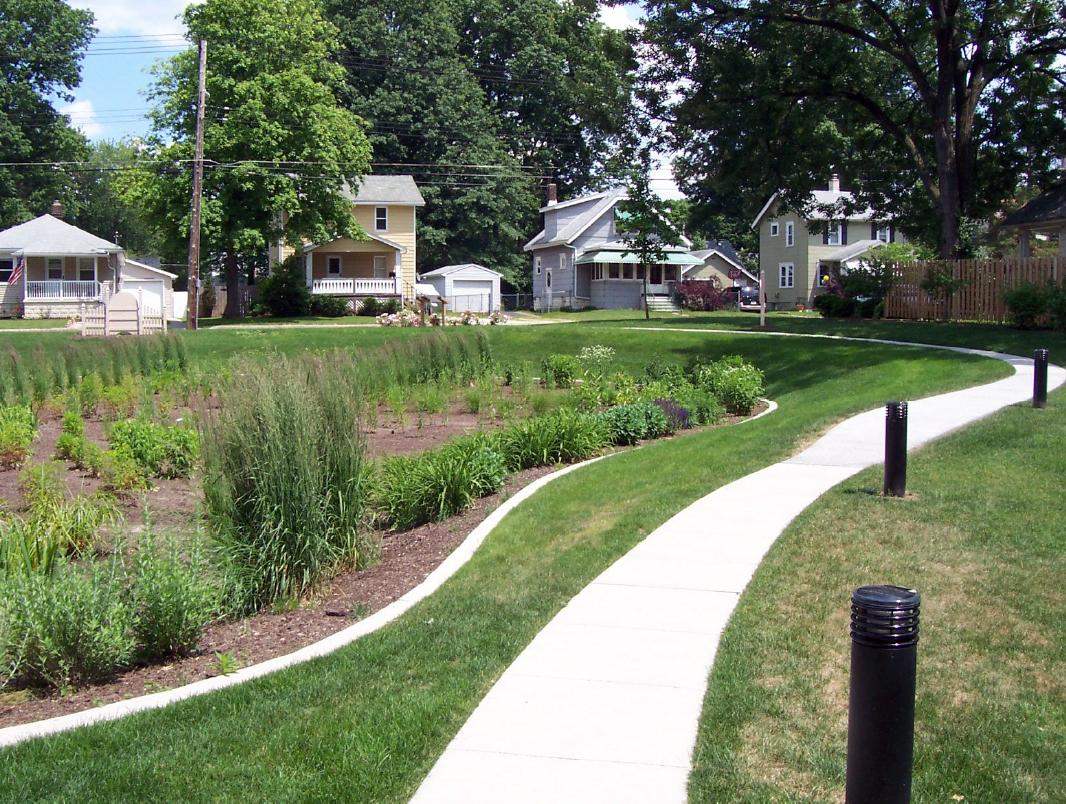Moving People Out of Harm’s Way: Property Buyouts
Property buyouts are a means by which communities can remove development from areas vulnerable to flooding by purchasing properties from willing owners. Property buyouts are especially useful after natural disasters to minimize or eliminate future losses of vulnerable or repetitive loss properties. Property buyouts tend to be funded by federal, state, or local funds, and can be used on a variety of scales, from individual homes to entire neighborhoods. Upon purchase, properties are demolished, and the land is often deed restricted, preventing future development.
Voluntary buyout programs following major flooding events can be funded with assistance from FEMA, which can then be coupled with additional state and local funds. This assistance can defray the costs of buyouts for communities.
The scale and timeframe for property buyouts is versatile. Buyouts can take place on a variety of scales, from a few of the most vulnerable properties in a floodway to hundreds of residences in a floodplain. Properties can be purchased as part of a single program following a storm or as part of a longer term effort.
Hazard Mitigation
Property buyouts reduce the impacts of flooding by removing vulnerable infrastructure and people from areas that are likely to flood, reducing the likelihood of damage, injury and death in the event of future flooding events.
Siting Considerations
Siting considerations for property buy-outs are dominated by the voluntary nature of the most important federal funding sources. All participants—from property owners to local government to the state and federal government—must choose to be part of the program. Thus, a great deal of the effectiveness of this strategy rests upon the willing participation of the required parties to the deal. Although local government always has the option of using eminent domain as an alternative in implementing a buyout strategy, that choice would mean that the program was entirely locally financed, as opposed to the usual 75 percent federal match. As a practical matter, communities rely on the federal buyout programs simply because their money can accomplish so much more. The 25 percent match comes from some combination of state, county, or municipal funds, depending on how states choose to support the program.
As a practical matter, this means that communities are wise to use buyouts in situations where they can gain substantial consensus among property owners on their willingness to sell, so that the acquired properties can be assembled into a coherent, contiguous unit of open space. The alternative is a patchwork of remaining homes amid vacant lots without the ability to create a park or forest. Such patchwork also means that the old infrastructure largely remains in place while serving fewer customers, a generally undesirable result from a planning standpoint. At the same time, communities with limited resources for buyouts will also want to prioritize areas where such buyouts have the greatest impact in terms of loss reduction relative per dollar spent. Thus, mapping and documenting loss patterns, particularly repetitive losses, is critical to making the best possible choices.

Costs
The main variable in the cost of a buyout program is how ambitious it aims to be. That ambition, however, is generally constrained by the amount of federal money available for what is typically a 75 percent match (which may be higher if some of the local match is waived under special circumstances). While HMGP has historically been a prime source of post-disaster federal funding to assist with buyouts, communities should be aware that FEMA offers several other programs, such as Pre-Disaster Mitigation and Flood Mitigation Assistance. Buyouts also depend on the support of the state; state policies vary with respect to the amount of emphasis they place on buyouts versus other mitigation strategies, such as elevation. The critical variable is the Fair Market Value of the homes being acquired, and there are specific rules in these programs for how that is determined. As home values in affected areas can vary widely, it is imperative that local governments have clear data on the comparative costs of buyouts in areas under consideration for this strategy. Projects also pass a benefit-cost analysis with the state and FEMA in order to gain approval for the use of federal mitigation grants.
Co-Benefits of the Strategy
The benefits associated with property buyouts accrue in two areas. First, moving people out of harms way and removing unnecessary vulnerable infrastructure reduces the overall risk and vulnerability in a community, thereby reducing the costs associated with ensuring the health and well-being of those communities during storm events and the costs associated with rebuilding in vulnerable areas.
Additionally, by moving people out of vulnerable areas and removing the infrastructure, communities are provided with opportunities to pursue strategies that may not have been possible otherwise. These benefits – from recreation in restored habitats, to economic development adjacent to waterfront parks, to improved local water quality – are reaped by the larger community and many times only made possible through the use of property buy-outs.
Maintenance Considerations
Maintenance costs are almost certain to be the responsibility of local government and should be taken seriously in developing a buyout strategy, given the permanence of the open space solution. However, maintenance costs can vary widely depending on the nature of the open space use that is chosen. Active recreation may well entail the highest maintenance costs, for example, with mowing grass for sports fields and caring for the required facilities. Communities should be able to budget for such costs if they anticipate these properly. One alternative is to deed the property to a land trust or other nonprofit entity that is willing to take responsibility for the ongoing maintenance of the space in question, but this is most likely to happen with passive and environmentally oriented uses, such as nature preserves.

Similar or Complementary Solutions
In coastal, wetland, and riparian areas, property buyouts may be used as part of a broader flood management strategy that seeks to reestablish natural functions that may have been lost over time, and which depend on re-creating the open space that once existed. In particular, property buyouts are especially useful for the restoration of floodplains and may be an important part of making waterfront parks, flood bypasses, floodwater detention basins, setback levees, or horizontal levees possible.
Additional Considerations
Unless it is not possible otherwise, property buy-outs should always be pursued in a voluntary fashion. Individuals and neighborhoods have ties that extend well beyond the market value of their home and the process of pursuing buy-outs can take a long time and considerable patience.
Additional Resources
FEMA has created a Property Acquisition Guidebook for Local Communities that brings together the best practices from States that have successfully fostered property acquisition projects.

